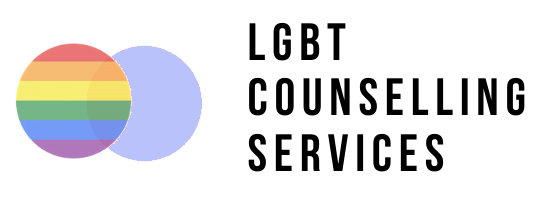Open Relationships in Gay Couples: Boundaries, Agreements & Emotional Safety
Open relationships are a natural part of the landscape for many gay couples. For some, non-monogamy is a way to explore sexuality, maintain individuality, or navigate differing levels of desire. For others, it’s about freedom, honesty, and building a relationship that genuinely reflects who they are — not what society expects them to be.
But an open relationship is not simply “opening the door.” Without clear boundaries, emotional agreements, and strong communication habits, even the most loving couple can feel overwhelmed, insecure, or disconnected. The truth is that an open relationship can either deepen intimacy or destabilise it — and the difference lies in how you handle the emotional work behind it.
Below is a deep, therapist-informed exploration designed specifically for gay couples considering or navigating non-monogamy.
1. Why Gay Couples Explore Non-Monogamy
Gay couples explore non-monogamy for many reasons, and each one is valid. Understanding the why is essential to building a healthy foundation.
Sexual compatibility
Two partners don’t always desire the same frequency, types of intimacy, or sexual energy. An open relationship can help couples balance desire without blaming or shaming either partner.
Long-term desire differences
Libido naturally shifts over time, and for many gay men, sexual connection can be an important way of feeling alive, confident and embodied. Rather than suppressing this need, couples sometimes integrate non-monogamy as a respectful, honest solution.
Personal values or relationship orientation
Some people simply are not monogamous by disposition — not because they love their partner any less, but because they express intimacy in diverse ways. Naming this openly is liberating.
Exploration & curiosity
For some gay couples, especially those who grew up with restricted sexuality or shame, exploring beyond the relationship is a symbol of freedom and body ownership.
Community norms
Non-monogamy is more openly discussed and visible in gay male culture. This doesn’t make it “mandatory,” but it does mean you’re not alone if you’re thinking about it.
Therapy helps couples go deeper, exploring questions such as:
“What are we hoping to gain?”
“What are we afraid of losing?”
“What does safety look like for us?”
“Are we doing this from a place of closeness — or avoidance?”
2. Clear Agreements Are Essential
An open relationship works when agreements are explicit, revisited, and respected. Vague assumptions are where things fall apart. Healthy couples create a framework that protects the relationship, supports emotional safety, and reduces unnecessary anxiety.
What’s allowed
Is it only sexual?
Are specific acts or situations off-limits?
Are certain contexts (e.g., friends, colleagues, ex-partners) not allowed?
What’s not allowed
Being clear on “no-go areas” avoids confusion. These boundaries protect emotional attachment and reduce misunderstandings.
Safety rules
Physical and emotional safety are non-negotiable. Many couples agree on:
Condom use
PrEP/PEP conversations
STI testing frequency
Disclosure of risks
How information will be shared honestly without causing panic
Check-in frequency
Healthy open relationships have regular check-ins: weekly, fortnightly, or monthly conversations where couples share:
How they’re feeling
Whether boundaries still feel good
Upcoming situations that might require discussion
Emotional experiences (jealousy, excitement, anxiety)
Emotional boundaries
This is where many couples struggle — not with sex itself, but with emotional attachment. Examples include:
No repeated dates with the same person
No sharing personal or intimate details
No sleepovers
No texting outside an agreed window
No “parallel relationships”
Every couple is different. Therapy helps identify which boundaries support closeness and which are based on fear rather than need.
3. Managing Jealousy
Jealousy is one of the most misunderstood emotions in open relationships. It doesn’t mean you’re insecure or controlling — it means something in the emotional system needs attention.
Understanding jealousy triggers
Fear of abandonment
Feeling less attractive or desired
Worrying about emotional replacement
Feeling excluded
Past trauma or infidelity
Attachment style differences
Therapeutic guidance
In therapy, couples learn to:
Name jealousy without blame
Understand its deeper emotional message
Build reassurance rituals
Offer comfort rather than defensiveness
Strengthen secure attachment
Jealousy is not an enemy. In a healthy relationship, it becomes a doorway to deeper vulnerability and connection.
4. Repair After Rupture
Even with the best of intentions, boundaries sometimes get crossed. What matters most is how partners repair — not how perfectly they perform the agreements.
Effective repair includes:
Taking responsibility without excuses
Being transparent about what happened
Understanding the emotional impact on the partner
Clarifying whether the breach was accidental, impulsive or a sign of deeper needs
Rebuilding trust through consistent actions
Revisiting boundaries and making them stronger
Repair is an act of love and maturity. When done well, it can make the relationship stronger than before.
Final Thoughts
Open relationships require emotional literacy, communication, and teamwork. When handled with honesty and care, they can deepen intimacy, build trust, and help gay couples create a relationship that truly reflects their values and desires. With the support of LGBT-affirmative therapy, couples can navigate non-monogamy with confidence, clarity and emotional safety.
How To Contact Us
You may reach us via phone, text, WhatsApp, email, or by completing the form below.
Phone / WhatsApp: (+44) 07594 970537
Email: hello@lgbtcounsellingservices.co.uk
LGBT Couples Therapy is part of LGBT Counselling Services, providing professional, inclusive online therapy and counselling for LGBT couples across the UK.



